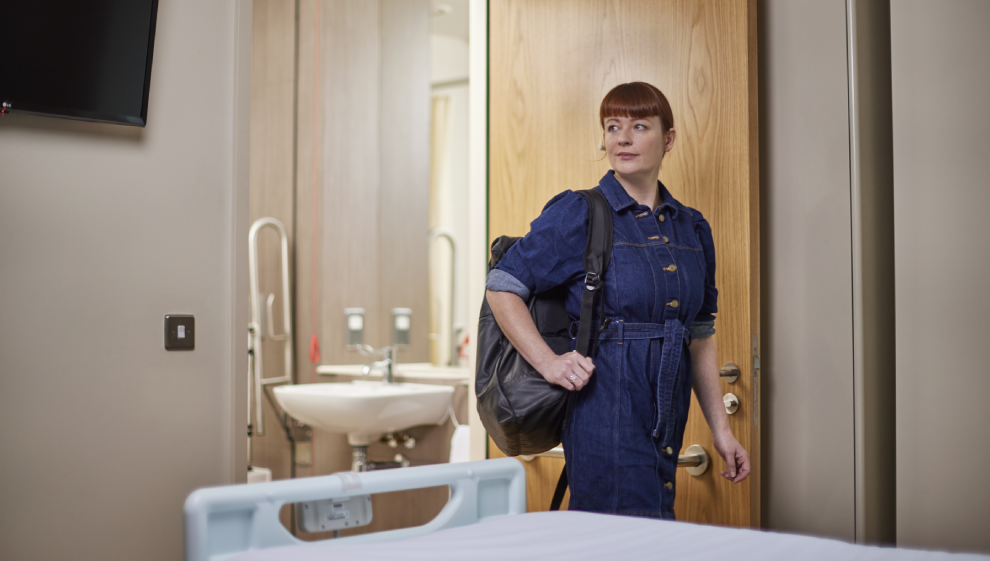An expert guide to contraception and birth control
- Overview
- 1. Condoms
- 2. The contraceptive pill
- 3. The contraceptive implant
- 4. The contraceptive injection
- 5. The contraceptive patch
- 6. Intrauterine contraceptives
- 7. Vaginal rings
- 8. Contraceptive diaphragm or cup
- 9. The “pulling out” method
- 10. Permanent sterilisation
- 11. Emergency contraception
- Frequently asked questions
From condoms and the implant to IUDs and the pill, Dr Unnati Desai explores the benefits and downsides of all the contraceptive options currently available in the UK to save you time and stress.
1. Condoms

Condoms have the benefit of being the only contraceptive option that will also prevent the transmission and spread of sexual disease and infection. Forming a barrier against bodily fluids, condoms prevent the transmission of infections like HIV, gonorrhoea, and chlamydia.
They are available without prescription and can be picked up in a variety of sizes and styles to suit you. As a highly accessible contraceptive option, condoms should be used if you’re engaging in casual sex outside of a relationship.
One downside to using condoms is that they can reduce sensation and pleasure in men. This often leads couples in committed relationships to explore other forms of contraception once commitment and trust are established.
Male condoms
Traditional male condoms can be purchased almost anywhere. They are typically made of latex, however alternatives can be bought if you’re allergic.
Clinics, sexual health clinics, pharmacies, and GP surgeries will often give free condoms out if requested.
For instructions on putting a male condom on correctly, see below:
- Open the condom packet carefully, making sure not to tear it
- Hold the tip of the condom between your fingers to ensure it's the right way around
- Place the condom over the tip of your penis
- Squeeze the top of the condom and roll it down
- If the condom won't unroll, it might be inside out
- Use a new one to avoid contact with any semen or sperm.
Female condoms
Female condoms consist of a soft, loose-fitting polyurethane or nitrile pouch with a closed end that covers the cervix and an open end that extends outside the vagina.
The closed end provides a protective barrier, preventing sperm from reaching the egg and offering protection against sexually transmitted infections (STIs).
It offers women an option for dual protection, as it can be inserted prior to sexual activity. Female condoms are an accessible and user-controlled method of contraception, empowering women to take charge of their reproductive health in a way that male condoms do not allow.
2. The contraceptive pill
The contraceptive pill is sometimes referred to as the “combined” pill, or simply just “the pill”. This oral contraceptive is a highly effective form of contraception, with a 99% success rate when taken in line with medical guidance.
The pill allows you to have penetrative sex without using a condom. It works by thickening the mucus produced by the womb to prevent sperm reaching and fertilising an egg. The womb lining is also thinned out which makes it harder for an egg to enter the womb in the event that it were fertilised.
To be effective, you need to take the pill every day at the same time for 21 consecutive days. If you miss a day, you may get pregnant. After this, take 7 days off. During this period you will bleed from the vagina. When this week is up, start taking the pill again for 21 days and repeat.
Are there side effects to the pill?
Common side effects include:
- Mood swings
- Nausea
- Painful breasts
- Minor headaches
- Changes to your skin
- Bloating
- Irregular vaginal bleeding.
There is no evidence to suggest that you will gain weight when taking the contraceptive pill.
Where do I get it?
As of 2023, you can now purchase progestogen and oestrogen containing pills over the counter from a chemist.
Previously, you would need a doctors prescription to start taking the pill.
3. The contraceptive implant

The contraceptive implant is a small plastic rod that is inserted into the upper arm. The implant releases small amounts of progestogen to prevent an egg being released from your ovaries.
A healthcare professional will fit the small rod like device into the fatty area underneath the upper arm. The implant is around 4cm long and you can choose which arm you’d like it in.
This form of contraception is effective for around three years and is a great contraceptive option for women who cannot or do not want to use estrogen-based contraceptives.
Does it hurt?
Your healthcare professional will numb your arm before they insert the implant. You may feel a small and sharp “prick”, but that’s it.
You might be able to feel the implant underneath your skin if you press down hard on the insertion area, but most women forget it’s there after a week or so.
How do I know when my implant has expired?
To make sure you aren’t relying on expired contraception, make a note of the date you got your implant. Make sure you schedule an appointment for removal a few weeks before the expiration date. This gives you time to arrange alternative contraception when your implant is no longer effective.
Are there side effects to the implant?
As with all forms of hormonal contraception, there can be side effects. See below for a list of possible side-effects you may experience when using the implant:
- Dizziness
- Stomach pain
- Mood swings
- Sore or tender breasts
- Vaginal soreness
- Vaginal dryness
- Amenorrhea (changes to your period)
- Headaches or migraines
- Changes to your sex drive
- Upset stomach
- Negative interactions with other medicines
- Nausea
- Higher risk of harmless ovarian cysts developing.
How effective is the contraceptive implant?
According to the NHS, the implant is 99% effective, making it one of the safest forms of contraception for preventing pregnancy.
4. The contraceptive injection
The contraceptive injection is another progestogen-based contraceptive that is 99% effective against pregnancy. There are two injection contraception options in the UK – one that lasts for 13 weeks and one that lasts for 8 weeks.
Like the implant, the contraceptive injection is a good option for women who can’t use estrogen-based contraceptives or are concerned they might forget to take the pill on time every day.
Benefits of the injection
- 99% effective against pregnancy
- No estrogen
- No need to remember to take the pill every day
- Not affected by other medicines
- One treatment every few months.
How does it work?
Like other oestrogen-free contraceptives, the injection works by releasing progestogen into your blood to prevent you releasing an egg (ovulation). It also thickens the cervical mucus produced inside the vagina to stop ejaculated sperm moving up and into the cervix.
Where does the injection go?
This depends on the type of injection you receive.
You can discuss your options with a healthcare professional when assessing which contraceptive option is right for you.
If you’re wondering what area of the body you’ll have your injection, click here for more information.
5. The contraceptive patch
Birth control patches (also called contraceptive patches) are small strips of fabric that release hormones into your body to prevent pregnancy. They’re a great alternative for women who struggle remembering to take the pill at the same time every day.
Each patch lasts a week and has a pregnancy prevention success rate of 99%. To use the patch correctly, use one patch per week for three weeks before taking a week off.
The contraceptive patch does contain oestrogen, so isn’t an option for some women. It works in a similar fashion to the combined pill. Oestrogen and progestogen are released into the blood, preventing ovulation and causing the cervical mucus produced inside the vagina to thicken.
Is the patch waterproof?
Yes, it is. You can safely wear the contraceptive patch swimming, or whilst taking a bath or shower.
Where does the patch go?
The patch should be placed directly onto your skin. You should make sure the area is free from hair and place the patch in an area that won’t aggressively rub against clothing.
The only place you should avoid is the breast. When you change your patch every week, it’s a good idea to adjust placement to avoid irritating the same area of skin.
What do I do if my contraceptive patch falls off?
This all depends on how long the patch has been off.
If your patch has been off for less than 48 hours, put a new patch on and change on your normal change day.
If it’s been off for more than 48 hours and you’re in week 1 or 2 of your patch cycle, put on a new patch and change it on your normal change day.
If you’re in week 3 of your change cycle, you need to put a new patch on and begin the entire cycle again. In practice, this means the day you put this new patch on is the first day of week one of your new patch cycle.
If you’re unsure about the effectiveness of your contraception after your patch has fallen off, click here for in depth guidance.
6. Intrauterine contraceptives
There are two main types of intrauterine contraceptives. They are the intrauterine device and the intrauterine system.
Both are often referred to as “the coil” and provide long-term (3 to 5 years) protection against pregnancy. They are forms of long-lasting reversible contraception that release copper (device) or progestogen (system) into the womb to stop you getting pregnant.
Which coil is right for me?
This decision should be made with the guidance of your medical professional. Shape and fitting wise, there is almost no difference between the two devices.
Copper IUDs do not contain hormones. They work by releasing copper ions, which are toxic to sperm and prevent fertilization.
The intrauterine system (IUS) releases a small amount of progestogen which thickens cervical mucus and inhibits the movement of sperm to prevent pregnancy.
Both are long-lasting forms of contraception, with the only practical consideration being whether you want to use a hormonal contraceptive device or not.
Does getting the coil fitted hurt?
Getting the coil fitted involves widening the vaginal opening with a device called a speculum. The “T” shaped coil is then inserted via the vagina, through the cervix and into the womb/uterus where it will sit.
It’s not uncommon to find fitting uncomfortable or painful, so talk to your doctor about taking local anaesthetic or painkillers beforehand.
The entire fitting process takes around five minutes, during which you will be told all about potential complications, placement, and how to have your coil removed if you so wish
Will I feel the coil once it’s inserted?
This is a good question. The idea of a semi-permanent device sitting inside the uterus is the number one reason why many women avoid the coil.
The truth is that there is that most women experience very little discomfort with the coil once it’s fitted. This is because the coil is a very small device. In terms of feeling the presence of the coil inside of you, this isn’t typically an issue either. If inserted correctly, the only part of the coil you should be able to feel is the thin threads protruding through the cervix. Feeling these threads is reassuring as this is a sign that the coil is in the correct place.
If you have any pain or discomfort at any time after your fitting, or if you’re concerned that your coil has been dislodged, consult a GP or healthcare professional.
Will my partner feel the coil during sex?
The coil has two small threads attached to the base that allow you to check that the device is still in place. Your partner may feel these threads from time to time during sex, but the sensation is not uncomfortable or painful. They will not be able to feel the device itself.
7. Vaginal rings
A vaginal ring releases oestrogen and progestogen into the body to help prevent pregnancy. When used and fitted correctly, vaginal rings have proven to be more than 99% effective.
Unlike the pill, the main benefit of using a vaginal ring is that once it’s in, you can forget about it. Each ring contains enough hormones to remain effective for a month. It does however, contain oestrogen, which will make it unsuitable for some women.
The most common way of using one is to wear the ring for 21 days, then take it out and have 7 days off. During this week, you’re still protected against getting pregnant. When this week is up, place another one inside your vagina and begin the cycle again.
8. Contraceptive diaphragm or cup
The contraceptive cup is what’s known as a “barrier method” of contraception. Barrier methods work by physically stopping the sperm fertilising the egg.
The contraceptive diaphragm is a shallow, dome-shaped device made of silicone or latex that is designed to cover the cervix and block sperm entering the uterus.
To effectively serve as a contraceptive, the cup needs to be used in conjunction with spermicide which is a substance that kills sperm.
Advantages of using a contraceptive barrier
- The cup doesn’t have to be worn all the time
- It can be used for sex and removed when safe to do so afterward
- It gives the woman control of her contraception
- It’s a non-hormonal form of contraception.
Disadvantages of using a contraceptive barrier
- It’s only thought to be around 92 to 96% effective against pregnancy
- It takes a while to learn how to use
- It requires the use of spermicide
- You may find it uncomfortable
- Putting it in can interrupt sex and foreplay
- No reliable protection against STDs and UTIs.
Do I need to wear it all the time?
Before sex, the cup or diaphragm contraception device is inserted into the vagina to cover the cervix, creating this barrier. The diaphragm must be left in place for a certain period (usually a few hours) after intercourse.
How do I use my contraceptive cup?
For detailed instructions on cleaning, inserting, using, and washing your contraceptive cup or diaphragm, click here.
9. The “pulling out” method
This method involves your partner removing their penis and ejaculating outside the vagina. Withdrawing the penis to ejaculate is a highly risky method of contraception and shouldn’t be relied upon to prevent pregnancy.
If you’re looking to prevent pregnancy and engage in unprotected sex, it’s recommended you avoid this method. This is because:
- There is no barrier between the penis and the vagina
- There is no hormonal or spermicidal element involved
- It’s easy to get the timing wrong
- Pre-ejaculated sperm can still get you pregnant
- The responsibility is on your partner who does not have to worry about getting pregnant
- It may make sex feel like a stressful or “risky” endeavour
- You have no protection against STDs and STIs.
How effective is the withdrawal method?
It’s estimated that the pull-out method is 80% effective at guarding against pregnancy.
Can pre-ejaculate cause pregnancy?
Yes, it can.
Pre-ejaculate can be released from the penis during sex before a man achieves orgasm. This fluid contains sperm and can result in you unknowingly getting pregnant.
Even in committed relationships, this is the number one risk associated with relying on the pull-out method as a form of contraception.
Does your fertility affect how reliable the pull-out method is?

Yes, the likelihood of pregnancy is influenced by the woman's menstrual cycle. This means using the pull-out method when a woman is most fertile is a lot riskier.
The most fertile time is typically around ovulation, which occurs around the middle of the menstrual cycle. Women with irregular menstrual cycles may find it more challenging to predict their fertile window accurately, making the method even riskier.
Couples relying on the pull-out method need to be aware of the woman's menstrual cycle and discuss using additional forms of contraception during her most fertile period.
This is because sperm can survive in the female reproductive tract for several days. If a woman has a shorter menstrual cycle, sperm may still be present from previous sexual encounters when ovulation occurs. This can increase the risk of pregnancy even if withdrawal is attempted.
10. Permanent sterilisation
Permanent sterilisation is an option for men and women who are looking for a non-reversible contraceptive solution. A vasectomy or “tube tying” surgery can be reversed but the results are not guaranteed.
Permanent sterilisation options are typically only explored by older adults who are not looking to have children.
11. Emergency contraception
If you have had unprotected sex and are concerned that you may be pregnant, there are two forms of emergency contraption that you can access. These are the morning after pill and the IUD (copper coil contraceptive).
The morning after pill
The most common emergency contraceptive used in the UK is the morning after pill. The sooner you take it after having unprotected sex, the more effective it will be. Depending on the brand of pill you take, this method can be effective as long as 3 or 5 days after having unprotected sex.
The contraceptive pill may be required if you engage in unprotected sex after forgetting to take or apply your regular form of contraception. For example, you may need the morning after pill if you forgot to take your combined pill, or if you didn’t apply your contraceptive patch correctly.
You can get the morning after pill from your GP surgery, at some pharmacies, or at a sexual health clinic.
It’s important to remember that taking the morning after pill will not stop you getting pregnant in the future or protect you against contracting sexually transmitted viruses or diseases.
Is the morning after pill free?
Yes, you can get the morning after pill for free in the UK.
Many sexual health clinics, pharmacies, A&E departments, and walk-in centres offer emergency contraception free of charge.
If you live in London, you can also order the morning after pill online following a brief consultation.
The IUD as an emergency contraceptive
The IUD is the most effective form of emergency contraception available in the UK.
The benefit of having an IUD fitted as an emergency form of contraception is that it can then serve as a reliable form of birth control for you moving forward.
To prove effective as an emergency contraceptive, an IUD should be inserted within five days of having unprotected intercourse or within five days of your earliest potential ovulation.
Frequently asked questions
How reliable is contraception?
This depends entirely on the style of contraception you’re using. It’s also important to note that no form of contraception is 100% successful as a method of birth control.
Can I take contraception after pregnancy?
You will begin ovulating again shortly after giving birth, so it’s important you have a contraceptive plan in place if you are not looking to get pregnant again right after giving birth. Most new mothers will discuss contraception with a midwife whilst in hospital after giving birth.
Because of the hormones involved, you will need to wait a few weeks before you can take certain contraceptive options.
Safe immediately after giving birth
- Contraceptive implant
- Contraceptive injection
- Progestogen-only pill
- Male condoms
- Female condoms.
Safe three weeks after giving birth
If you’re not breastfeeding and your healthcare provider has checked you are not at risk of developing blood clots, you can start to use the options below three weeks after giving birth:
- Combined pill
- Vaginal ring
- Contraceptive patch.
Safe four weeks after giving birth
The NHS advise that if you haven’t had an IUD or IUS inserted within 48 hours of giving birth, you can arrange for this procedure to happen now.
Safe six weeks after giving birth
If you are breastfeeding, you should be able to safely start using the following contraceptive options after six weeks:
- Combined pill
- Vaginal ring
- Contraceptive patch.
Are there permanent forms of contraception?
The only permanent (non-reversible) forms of contraception currently available in the UK are tubal ligation (female) and a vasectomy (male). These are sometimes referred to as “getting your tubes tied” and “getting the snip”.
You can undergo surgery to reverse either of these procedures, however success rates vary depending on several factors. You should only consider permanent contraceptive options if you do not plan to have children in the future.
Does contraception prevent sexual infection?
Contraception is an effective way of avoiding pregnancy, however most methods offer no protection against sexual infection.
The only method of contraception that can prevent the spread and transmission of sexually transmitted disease and infection is using a condom.
Will my period change when I start contraception?
This all depends on the style of contraceptive you use.
Some methods of birth control may lessen vaginal bleeding, whilst others may actually increase it. The extent to which your period is affected by your choice of birth control largely depends on your hormones and genetics.
See below for a list of what can change:
- Whether you get a period at all
- Regularity of bleeding
- Intensity of cramps and other symptoms
- Length of period
- Frequency of spotting and light bleeding
- The intensity of mood swings associated with your period.
What is natural family planning?
Natural family planning is a contraceptive method that involves avoiding unprotected sex when a woman is most fertile. The method involves avoiding unprotected sex during a woman’s “fertility window” reduces the risk of accidentally getting pregnant.
To understand when you’re in this fertile window, you’ll need to note the signs and signals for at least 3 menstrual cycles. These signs include changes to the position of your cervix, changes to your body temperature, and changes to the consistency and appearance of your cervical mucus.
Common in long term relationships, this method is typically used by couples who are not using contraception and are not planning on getting pregnant.
If you aren’t trying to get pregnant, avoiding standard forms of contraception has its risks. Whilst the NHS notes that natural family planning can be up to 99% effective if followed correctly, there is larger room for error. The risks involved include failure to accurately predict your fertility window, and failure to abstain from sex during the entire window.
One benefit of natural contraception via planning is that there are no physical or mental side effects.
Last updated Thursday 15 August 2024
First published on Friday 3 May 2024

